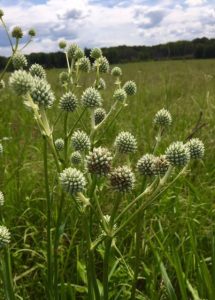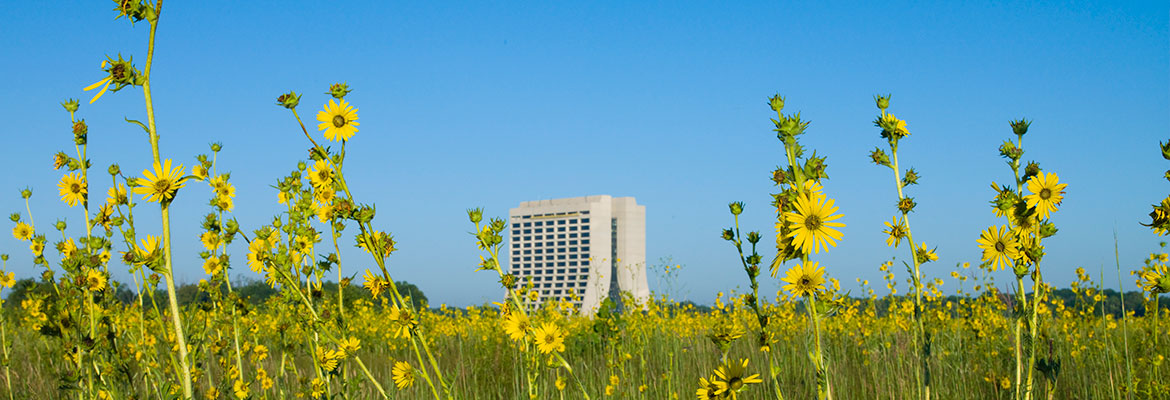The land within the boundaries of Fermilab is a microcosm of many ecosystems and land uses found in the Midwest.

Rattlesnake master (Eryngium yuccifolium) is an important species of wet prairie communities. One reason is that it is the host plant for the Illinois endangered Eryngium stem borer (Papaipema eryngii). Photo credit: J. Hooymans
These areas are categorized by habitat community type to determine how best to restore and maintain them.
The classifications scientists use to describe natural communities give a short, simple name to a very complicated thing. Classifications such as “oak savanna” or “tallgrass prairie” refer to communities that may include hundreds of species of plants, and—when accounting for all the beetles, spiders, snails, and microbes—thousands of species of animals, fungi and bacteria. When biologists study a natural area and decide what communities are present, considerations include the entire biota, historic evidence, and abiotic factors such as hydrology and parent material found below the soil.
At Fermilab, habitat community types follow classifications found in the Chicago Wilderness Terrestrial Community Classification System (CWBRP 1999) and Plant Communities of the Midwest: Illinois Subset document (Faber-Langendoen 2001).

